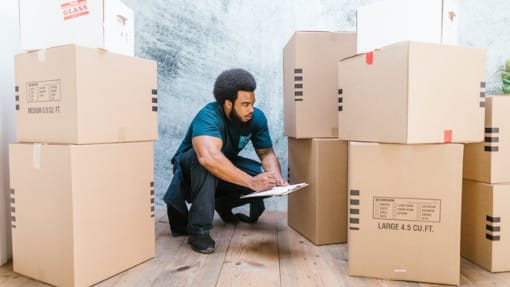Have you ever found yourself digging through an old cupboard, tossing aside colourful pieces of ‘80s lycra, vinyl records and unused running gear?
I sure have! And almost every time I’ve discovered some hidden gem at the bottom like a mint condition original Gameboy with the Tetris cartridge still inserted. It never works, though. Old electronics stored haphazardly in a cupboard never do.
You see, electronic devices are not built for long-term storage.

If you stuff a laptop, a television or video recording equipment into a storage unit without proper care, it probably won’t come out in the same condition that it went in. So if you’re a budding web designer or a voice-over artist or you just enjoy sitting with your feet up watching TV then you need to take care of your equipment.
Rust, mold and cracking can all quickly convert a valuable piece of kit into a worthless pile of circuit boards and wire.
For this blog, I’ve interviewed all our storage experts to collect some essential tips on storing electronics.
If you follow our tips, your laptops should emerge from your storage unit looking great and working just as well as they did when they went in. Let’s get started.
Backup Everything
If you prep your electronic devices properly and store them in the right way, they should survive in storage for years.
However, climate control systems can malfunction, facilities can flood and electronics can spontaneously pack up. Do not think that your devices are completely safe in storage.
It always pays to be prepared and be prepared for the worst case. So, if you want to ensure your data is safe and secure, back it up and store copies across a number of different sites.
Clean Off Dirt and Dust
If a couple of crumbs fall off your lunchtime sandwich get lodged in your keyboard, it’s not going to destroy your laptop overnight. (Although it’s still super unhygienic!)
However, if left there for months or years, dirt, dust and grime will cause problems.
Before you pack away all your devices, dust off any stray contaminants then wipe down all accessible surfaces.
This should remove the vast majority of the dirt and grime that could cause problems later on.
Remove Batteries
Batteries are little ticking time bombs, just waiting to leak nasty battery acid all over your circuit board.
Chances are, you’ve already had to deal with this. I’ve certainly had to spend a few hours nervously cleaning out the battery slot with a paper towel, constantly worrying that I’ve got some of the acid on my hands.
Well, the bad news is that batteries and storage really don’t mix. Let me repeat that, batteries and storage do not mix.
Seriously, leaving batteries connected to an electronic device and tossing it into storage is a recipe for disaster.
While you might get away with high-quality integrated batteries — laptop batteries, camera batteries, etc. — cheap disposable batteries will burst if left connected for any extended period of time.
So, before you put any electronics into storage, remember to remove the batteries from them. If they’re disposables, remember to recycle them too!
Dig Out the Original Packaging
When it comes to long-term storage, the original packaging is almost always better. I mean, the original box was designed to hold and protect its device during transportation, storage and display.
Any makeshift packaging will do what the original did but worse.
If you still have it, I strongly recommend you dig out the original boxes and inserts then re-pack your devices the way you got them.
Static-Free for Extra Protection
Yes, yes, I know. Static-free packaging materials aren’t exactly easy to get your hands on. Nor are they, strictly speaking, necessary for storing electronics.
Like I said, static-free packaging isn’t really necessary when storing everyday electronic devices. Laptops, games consoles and phones are all designed to cope with everyday static shocks and should survive in storage unscathed.
Delicate electronics like computer parts, however, are much more susceptible to damage as their inner workings are directly exposed.
For delicate devices, static-free packaging is a good idea. Plus it’s not actually that much more expensive.
Don’t Use Plastics
Wrapping your devices in waterproof plastic might seem like a great idea but it can easily backfire on you. Yes, plastic will keep water out but it will also trap moisture in.
Excess moisture is one of the biggest threats to electronic devices whether they’re in storage or in use. A stray glass of water can turn a television to scrap just as easily as a super humid room.
If you have any silica gel packets handy, tossing in a couple of sachets will help soak up excess water in the air, keeping your devices nice and dry.
Cables
If you leave cables plugged in, they have an annoying habit of seizing and getting stuck. If it’s just one USB cable stuck in one USB port, that’s okay. You can live with that, right?
Well, what about if it’s your only video output or your power cable port? That’s going to be more annoying.
To avoid dealing with any seized sockets, unplug all the cables and wires from your devices. For easier storage and easier unpacking, curl each cable into a loop, tie on a label and then store them normally.
This is a guest post by Fraser Sutherland, marketing manager at Storage Vault



